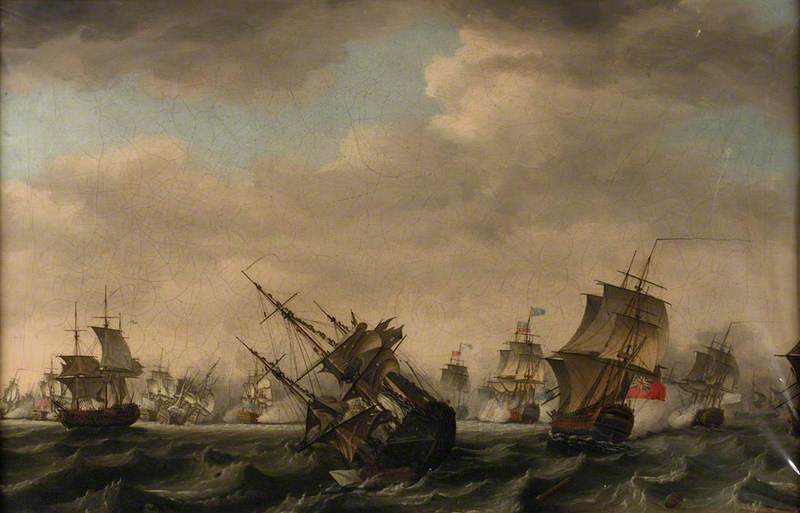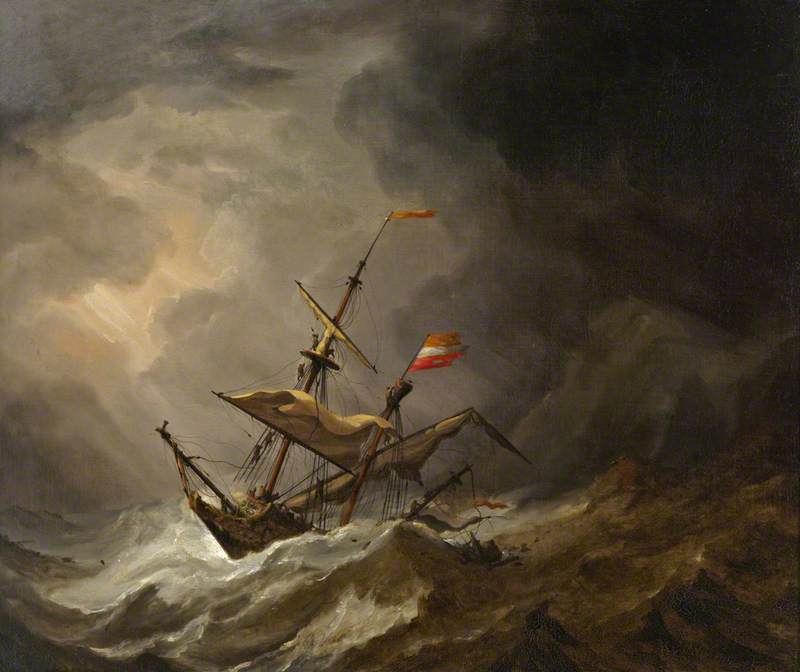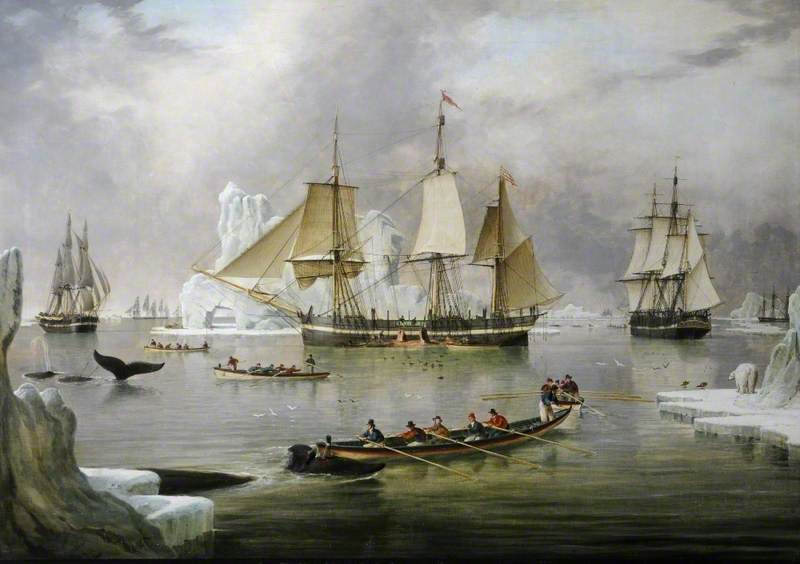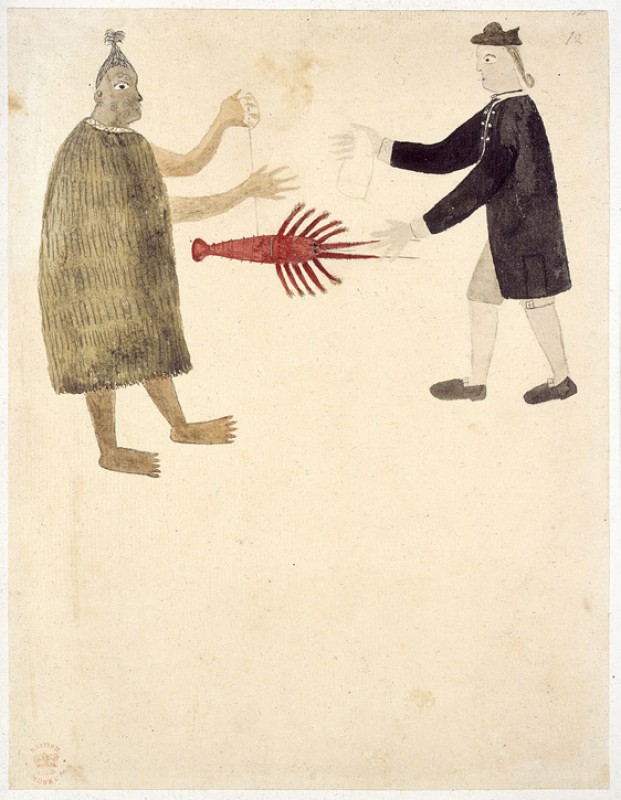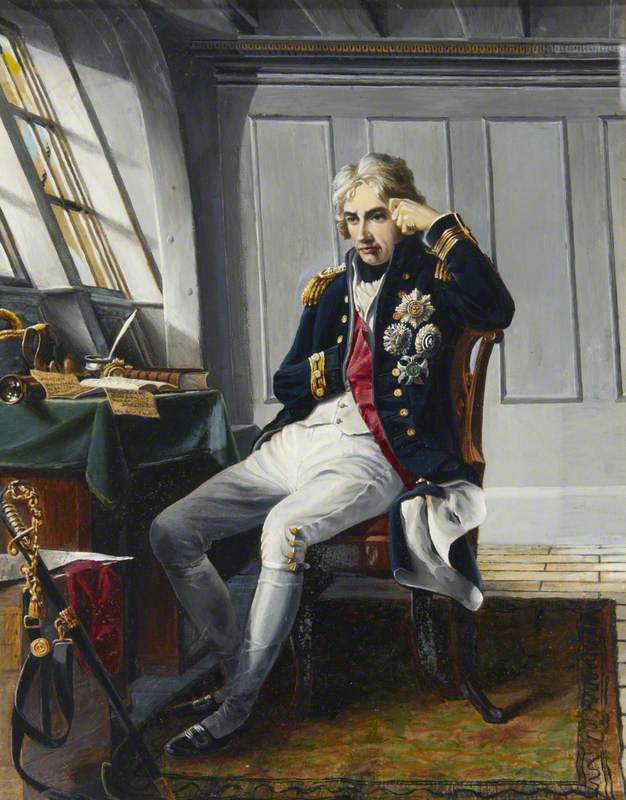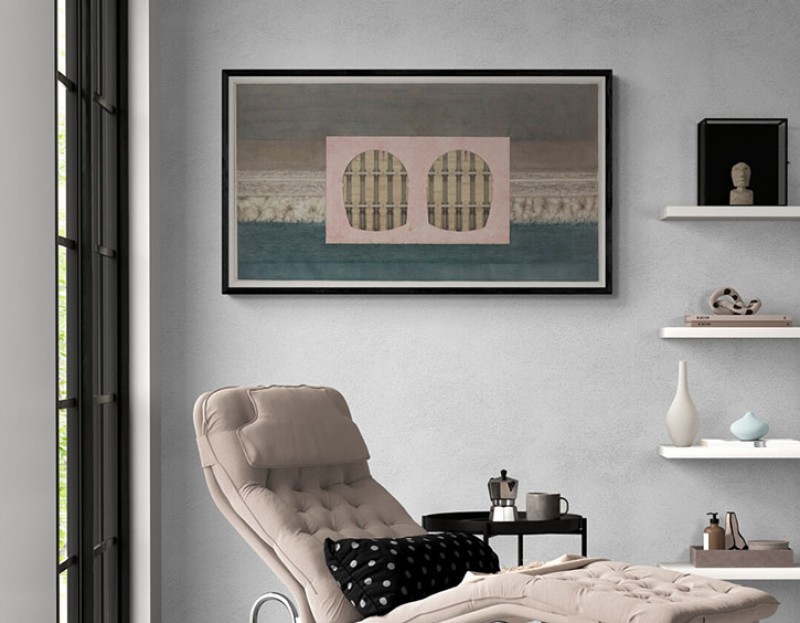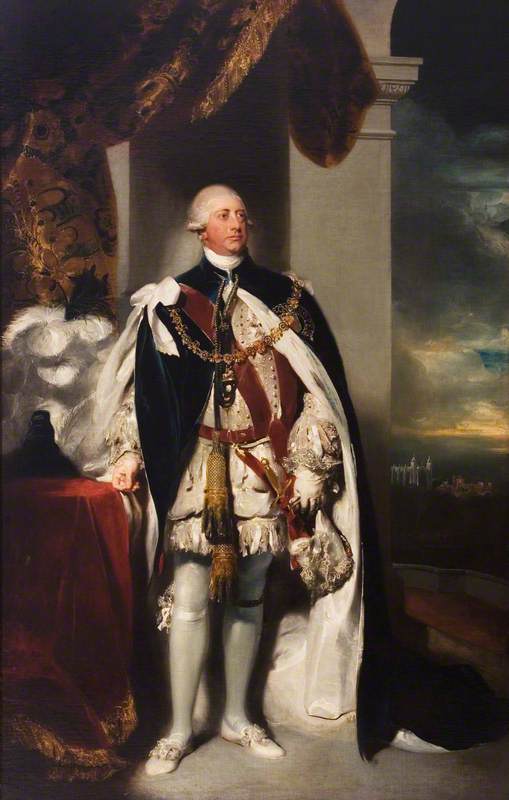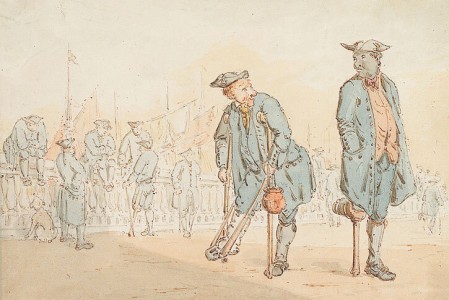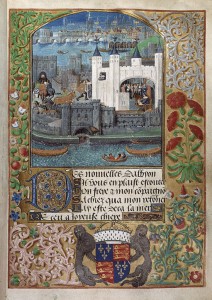I was recently able to publish details of the life of a hitherto obscure ship's carpenter and painter working in Greenwich in the second half of the eighteenth century. These details have emerged through new research by me, in my role as Art UK's Maritime Subjects Group Leader, and Art Detective Osmund Bullock.
The enquiry was first raised in an Art Detective discussion linked to The 'St Albans' Floated out at Deptford, 1747 (National Maritime Museum, Greenwich) by John Cleveley the elder (c.1712–1777), who was a Deptford shipwright and marine artist.
The 'St Albans' Floated out at Deptford, 1747
1747
John Cleveley the elder (c.1712–1777) 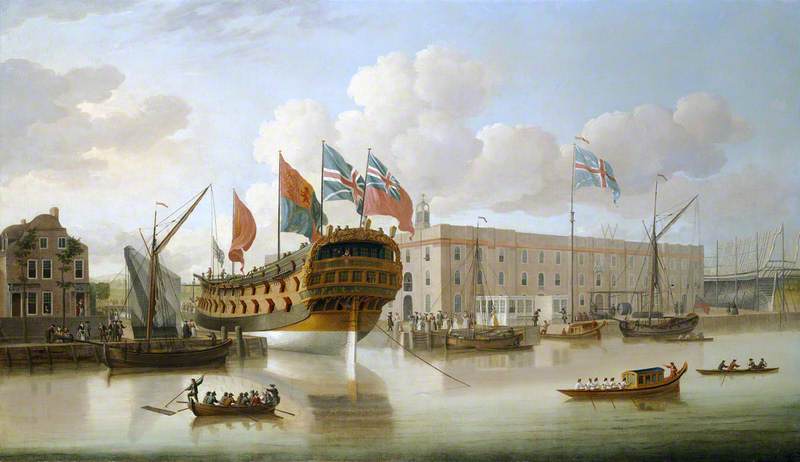
I had been asked for advice about another, larger painting of this event which, if it had lacked an inscription, would probably have been fairly confidently attributed to Cleveley, except that it is very clearly signed and dated 'Willm Pratt Pinx / 1750 Greenwich' on the awning of the boat at lower right.
It eventually appeared on 23rd May 2018 in an auction of furniture and old master paintings, at Doyle, New York (lot 31). It was being sold from the collection of the publisher Nelson Doubleday Jr (1933–2015) and was described as The 'St Albans' floated out at Deptford, after John Cleveley the Elder. The presumption is that it is probably based on another version of the 'floating out' by Cleveley that is no longer known, not the smaller signed and dated 1747 one in the National Maritime Museum.
The 'St Albans' floated out at Deptford in 1747
1750, oil on canvas by William Pratt (1717–1795), after John Cleveley the elder 
Mr Pratt remained an enigma, not featuring in any of the usual sources. The compositions and style were so similar that I thought it inconceivable that Pratt could not have been associated with Cleveley. The obvious possibility was that Pratt might have been one of the craftsmen in Cleveley's circle at Deptford Dockyard, which by the mid-eighteenth century was the main yard for building and maintaining the royal yachts. This was the starting point for further research.
Uncovering the life of William Pratt
It is thought that William Pratt was the son of another William, 'joyner' of Chatham, and his wife Susannah. He appears to have been working in Woolwich Dockyard, 1743–1746, then for the next 22 years, to 30th June 1770, there is a full record of his almost continuous employment as a ship's carpenter in London, briefly at Portsmouth and probably also at sea in the ships he helped build. This was common practice, though Cleveley seems largely to have avoided it, probably based on his unofficial merits as a painter working for influential naval patrons. Pratt's service is summarised in a table by the Navy Board, following his application in 1770 for superannuation and a pension.
Pratt was listed as carpenter of the 74-gun Mars from 1756 to 1760, so probably saw action in that ship at Admiral Hawke's victory over the French at the Battle of Quiberon Bay on 20th November 1759.
On 14th May 1746 William Pratt and his wife Mary had twin boys (their third and fourth children), baptised 'Vanderveld' and 'Vandike' Pratt, who quickly died and were buried within three days of the birth. The following year, a daughter 'Rosalva' was born, whose life was just as brief. As Osmund Bullock pointed out, the names (variants of Van de Velde and Van Dyck) are a clear indication of their father's artistic interest. He further suggests that the last child's name probably referred (in a common variant spelling) to the Italian pastel portraitist Rosalba Carriera, who was then well known outside Italy. Osmund added that, in another circumstantial coincidence, John and Hannah Cleveley lost their two eldest children as infants in 1746, so if they did know one another it seems reasonable to suppose that they may have been drawn together by shared family experience.
In a further possible link, the Pratts' final child, Andrew James (born 15th November 1752), was the only Pratt with two forenames, and James was the name of the Cleveleys' last and also twin sons, born five months earlier in June 1752. He was ship's carpenter in the Resolution on Captain Cook's final Pacific voyage (1776–1780) and brother of John Cleveley the younger, also a good painter, especially in watercolour.
Launch of HMS 'Alexander' at Deptford in 1778
c.1778
John Cleveley the younger (1747–1786) 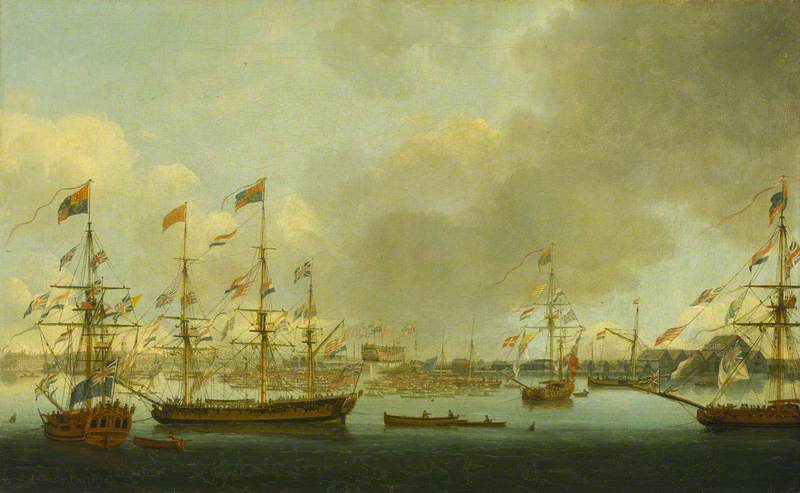
Much later a shipwright called Robert Johnson of Bermondsey stood payment guarantor to a William Pratt (no profession stated) who was an in-patient at St Thomas's Hospital for nearly a month in 1794. Only Johnson's occupation and proximity suggest he may have been assisting a fellow craftsman, but then 'William Pratt, a shipwright' was buried at Greenwich on 9th February 1795.
The painting that prompted this investigation is to date Pratt's only identified work, but it may now be possible to find others among pictures attributed to Cleveley (senior) for lack of alternative names. Pratt was undoubtedly in his circle, only about five years younger, certainly a dockyard colleague, and to all appearances a pupil and probably friend.
Where is Pratt's picture now?
It is fitting that – after its sale in 2018 – Pratt's painting returned to Greenwich, where it hangs in the Grade II-listed Trafalgar Tavern, overlooking the Thames waterfront that he knew so well, albeit now drastically changed.
The Trafalgar Tavern
The tavern was the setting for the wedding breakfast in Charles Dickens's Our Mutual Friend, and became known for a later Victorian tradition of 'ministerial whitebait dinners' associated with the Liberal party. At the end of Parliamentary sessions its ministers would come down from Westminster by river to dine there on whitebait fresh from the lower Thames: Tories did the same but at the long-vanished 'Ship Hotel', where the clipper Cutty Sark now stands behind Greenwich Pier.
After the First World War, the 'Trafalgar' became a home for aged seamen and, during the Second, accommodation for naval officers and then rented private flats. It was first restored as an elegant late-Georgian tavern in 1968. Today it is lavishly decorated with paintings and prints largely related to Greenwich, the Thames and the Royal Navy and each room is identified by a 'Nelsonic' name.
Pratt's painting is now the centrepiece of the grandest first-floor Nelson Room itself, where it hangs in its fine rococo frame over the fireplace.
The 'St Albans' floated out at Deptford in 1747
1750, oil on canvas by William Pratt (1717–1795), after John Cleveley the elder, hanging in the Trafalgar Tavern's Nelson Room 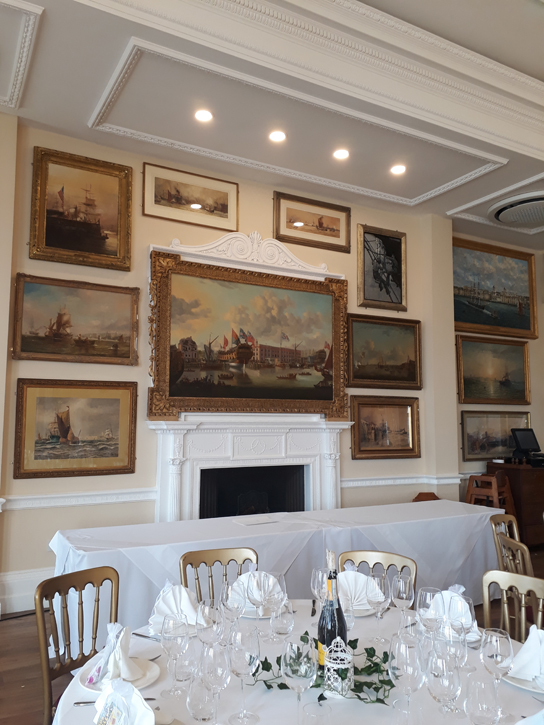
This final image shows it just before the start of an evening wedding dinner in September 2021.
Pieter van der Merwe, Group Leader of Art Detective's Maritime Subjects
This story is adapted from 'William Pratt of Greenwich (1717–1795): ship's carpenter and painter', published in The Mariner's Mirror, 107:3, 370–373
